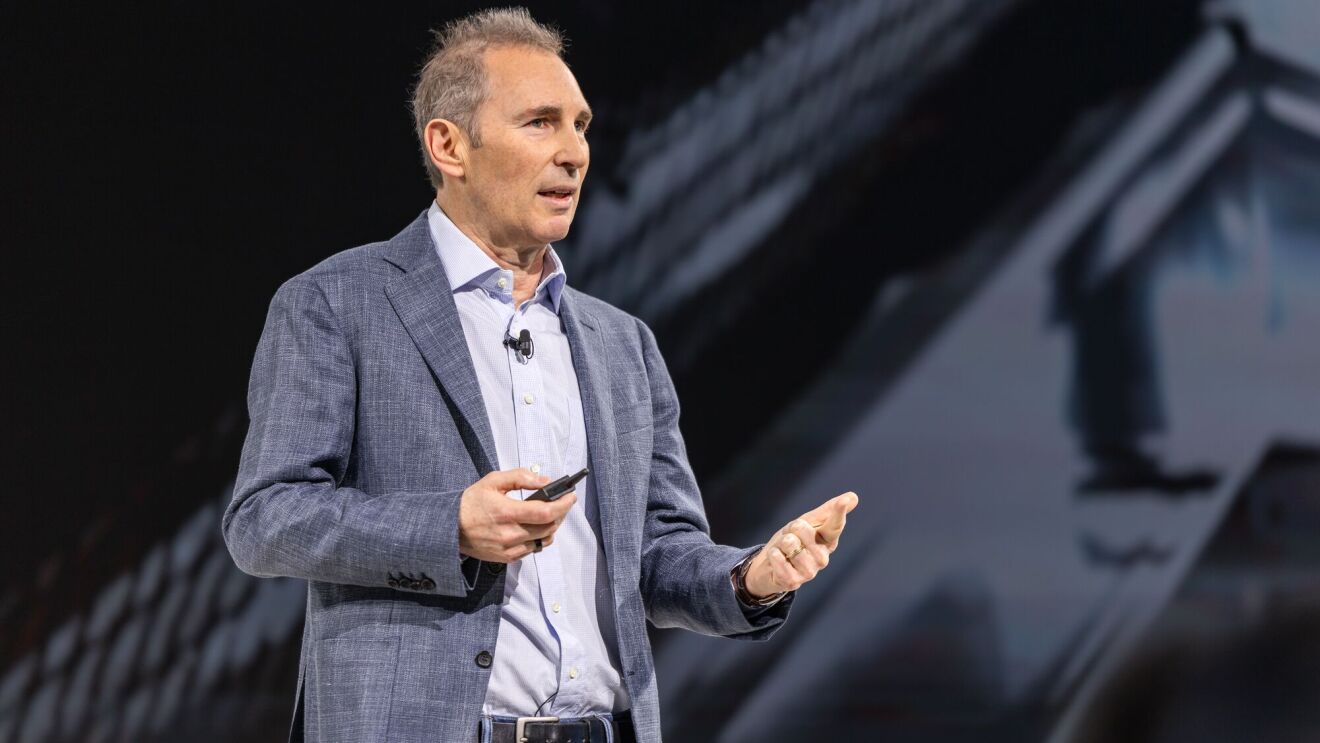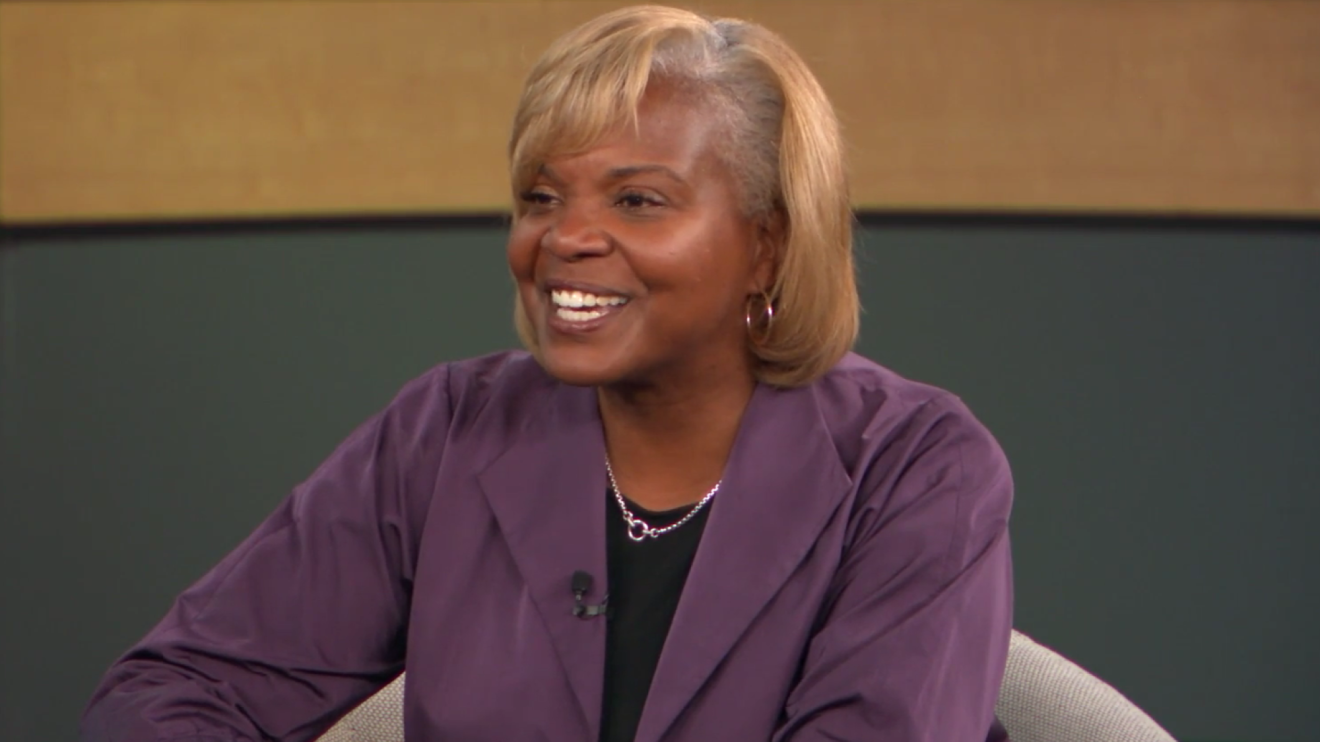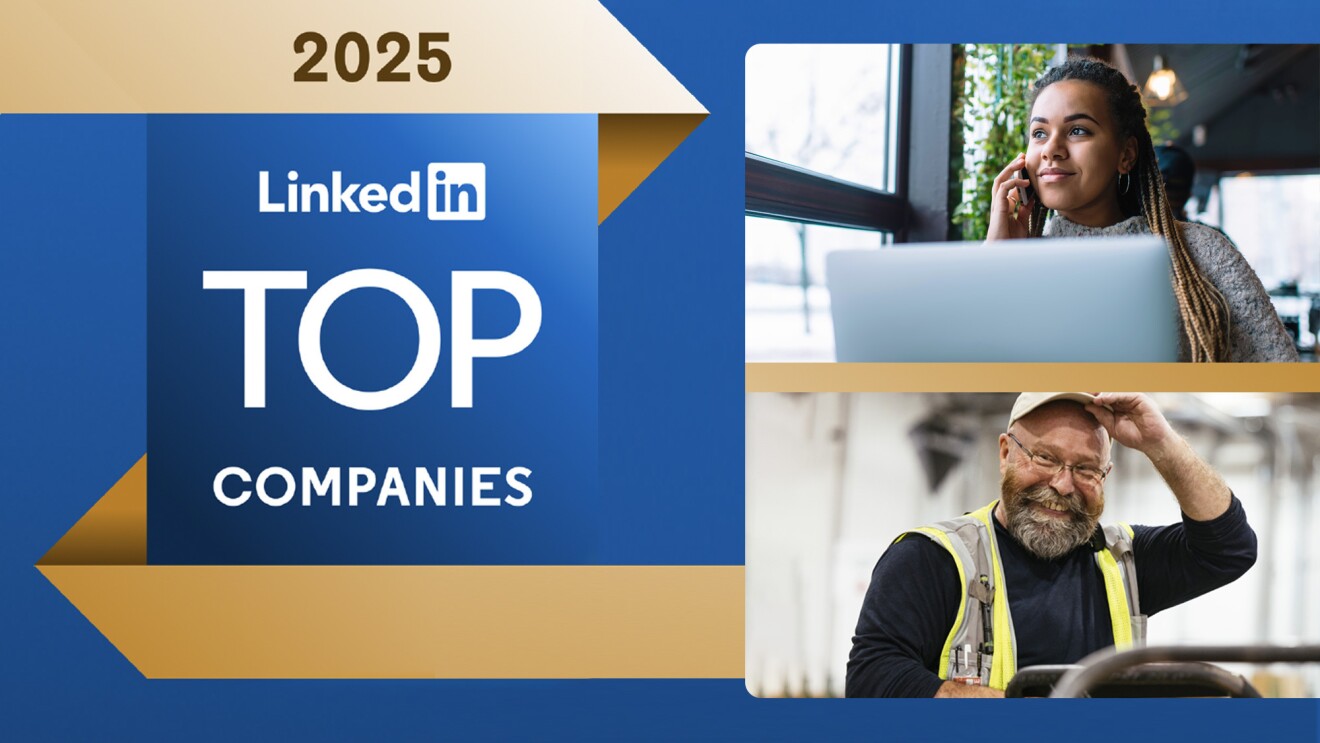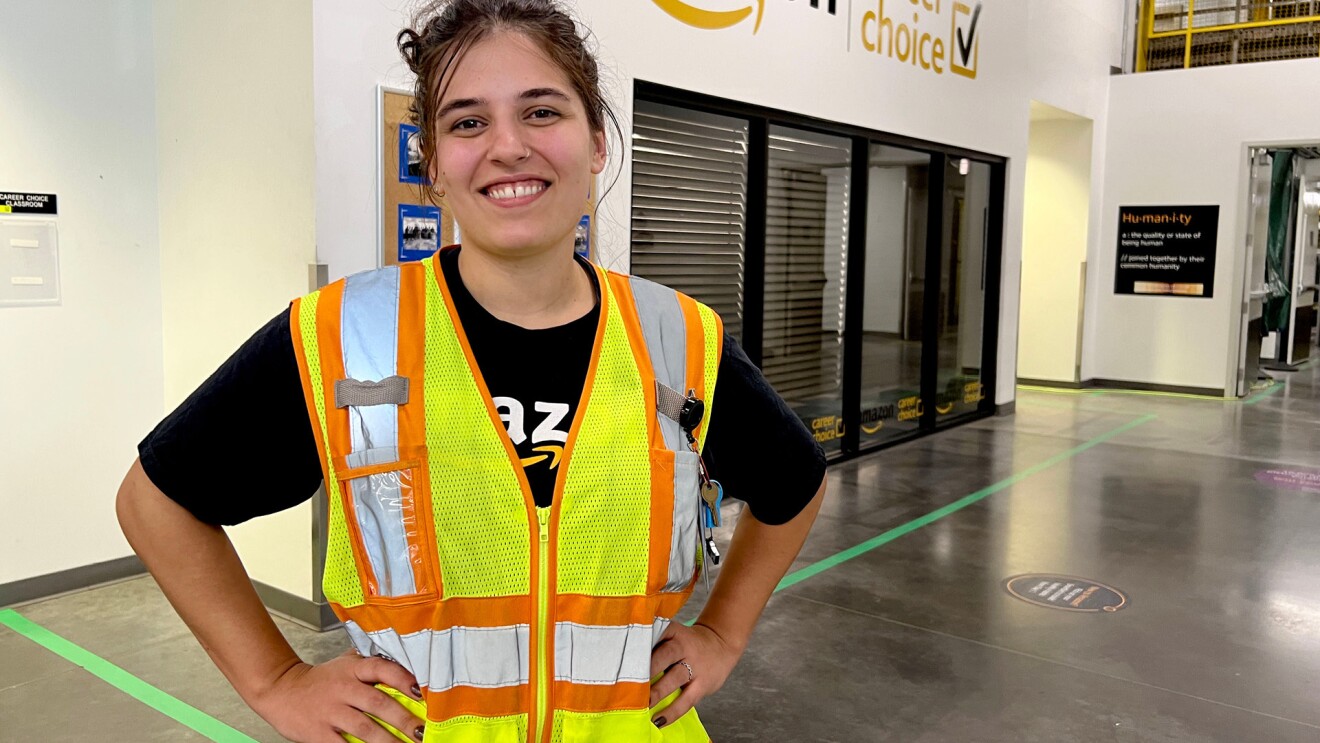For millions of Amazon customers with disabilities, even simple accessibility features make a big difference.
“Everything that makes somebody's life a little better is exciting to me,” said Josh Miele. “Anything that Amazon does impacts an enormous number of people.”
01 / 02
Miele, a principal accessibility researcher, is part of the Amazon team that brings these features to life—innovating on behalf of customers to make products more accessible. His primary job is to help Amazon develop things like tablets, TVs, and Alexa-enabled devices that are accessible for people with disabilities.
Miele's work has earned the Barry Levine Memorial Award for Career Achievement in Audio Description, by the Audio Description Project of the American Council of the Blind. He was also inducted into the 2021 class of MacArthur Fellows, which recognized his many decades of designing cutting-edge accessible experiences for people who are blind and low vision.
“Because I'm blind, and because I've spent most of my career designing and developing accessibility tools for Blind people, that is one of the main areas that I focus on,” he said. “But I also make sure that we are doing what we need to do to design our tools for everybody—whether or not they have a disability, and whether or not it's a visual disability.”
From academia to Amazon
Miele came to Amazon after spending more than 20 years in academia. In his previous role, he prototyped, researched, and developed advanced information technology for people with visual disabilities.
“I was at a nonprofit, an accessibility think tank,” he said. “I loved my job. I loved what I was doing, but I wanted to have more impact and I wanted to try something new, challenging, and exciting. Amazon was definitely all of those.”
While the move to Amazon eventually felt like a natural step, Miele was initially cautious as he considered the transition from the academic world to the technology space.
“I was very selective about making a move into tech. Some opportunities had come up, but they certainly wouldn't have been an improvement for me.” The opportunity to grow as a leader was important, and he noted that “there are very few people with disabilities in accessibility leadership roles at other companies.”
Innovating at Amazon
Since his start at Amazon nearly two years ago, Miele has worked on many projects that have undoubtedly impacted the lives of millions of customers. While some of these include technological marvels like “Show and Tell” for Alexa and Braille Screen Input on Fire tablets, one of the solutions he’s most proud of doesn’t involve complex technology.
01 / 03
“I helped design the tactile overlay on Amazon’s Smart Oven and microwave, and I'm super pleased about that because it's just such a great, low-cost, practical solution to a problem that is faced by Blind people every day. Blind people have forever been sticking their own little labels on their microwaves, but this is the first time a smart oven and microwave designed for mainstream use also come with the option of braille labels—they’re not products that talk or ‘blindness’ products. They’re just off-the-shelf products, but we offer braille labels with them.”
“Not all solutions need to be super clever and high tech. They just need to work and they need to be practical.”
Building a more accessible world
The work of Miele and his accessibility colleagues is an important step in the process of building a more inclusive world, but he believes accessible technology is just one part of a much larger picture.
“The technology is a sideshow. What we really want is for disability to be accepted and normalized and planned for. So it's not just, ‘Is my tablet going to be accessible when I buy it?’ It's: ‘Is my university going to have systems in place for me when I go to college? Is the accreditation course I'm taking going to have materials in a form that I can use? Is the dating app that I want to use going to be meaningful for me without pictures?’”
Miele stresses that technology is not the sole solution to building a more inclusive world. Real change starts when we rethink the way we perceive accessibility.
“If we can change the way we think about disability, ableism, and inclusion, the technology will follow. There's no more remarkable thing that could be done with artificial intelligence or technology than the transformation of the way we think about disability as a culture.”
The process of making an accessible product
In true Amazon fashion, Miele said his process of creating accessible features for products starts with the needs of the customer, and works backward. “The first question is always, ‘what is the experience that we're trying to make accessible and who are we trying to make it accessible for?’”
In true Amazon fashion, Miele said his process of creating accessible features for products starts with the needs of the customer, and works backward. “The first question is always, ‘what is the experience that we're trying to make accessible and who are we trying to make it accessible for?’”
Miele noted that it is ideal to make all products accessible to everyone from the start. One approach he takes is to create multiple solutions that the customer can turn on and off.
“Customer choice is one of our most important tenets at Amazon,” Miele said. “That applies to accessibility as well. Rather than saying, ‘If you're blind, this is how you're going to do things,’ it's better to say ‘We have a bunch of different things that might make it easier for you to experience X as a Blind person. It’s up to you to choose the ones you want and how you use them.’”
Beyond the devices
The opportunity to make a positive impact on the lives of Amazon customers was an important part of Miele’s move to the company, but the company’s inclusion of employees with disabilities also played a role in his decision.
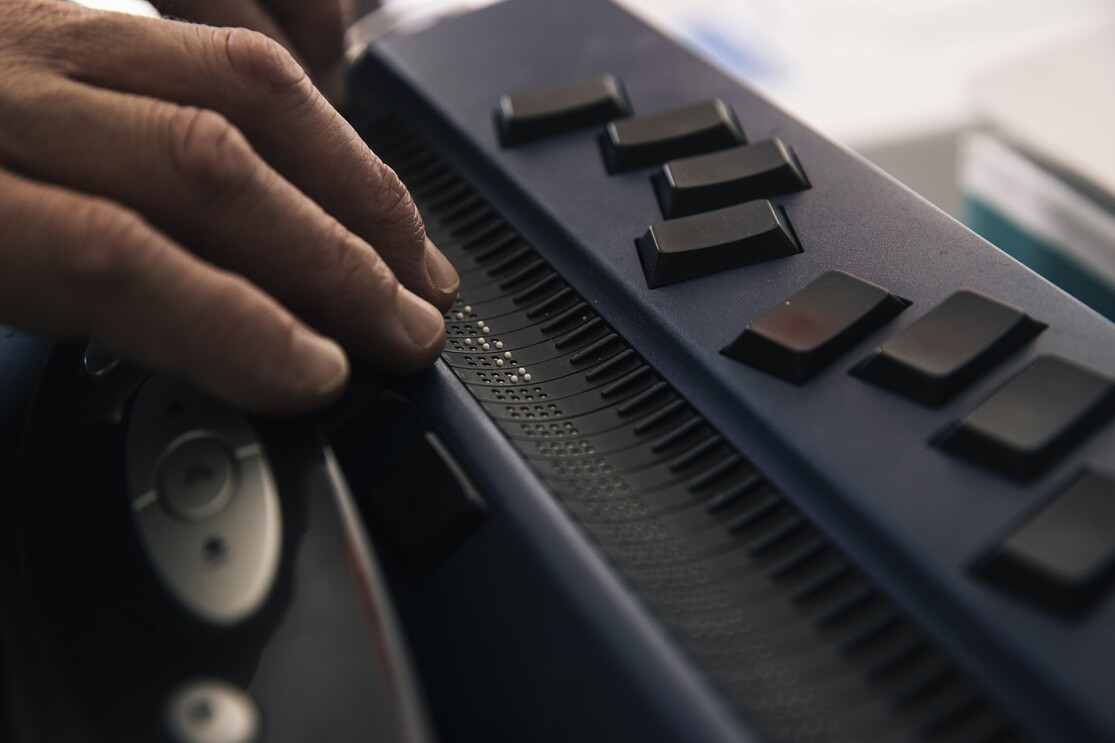 Miele using a refreshable braille display in his home office.Photo by Stephen Lam/AMAZON
Miele using a refreshable braille display in his home office.Photo by Stephen Lam/AMAZONPwD, or People with Disabilities, is an internal affinity group that serves as the representative voice for Amazon employees with disabilities, focusing on disability inclusion. Miele actively participates in the Bay Area chapter.
“I would not have felt comfortable coming here if it weren't for the fact that we very clearly have a powerful and well-developed disability culture inside Amazon,” he said. “The fact that there was Amazon PwD and that Amazon has a lot of disability consciousness, and not just about accessibility, but about the politics of disability reassured me that I’d be comfortable here.”
Outside of Amazon, Miele started a grassroots group called the Blind Arduino Project, a series of online resources and teaching workshops that instruct Blind people on how to independently work with electronics and build hardware devices. Miele said his work with this project is aimed to help others who are blind build the tools they need in order to do the things they want to do.
On what drives his work at Amazon and beyond, Miele said, “All I want is for people to be able to roll through and do the things they want to do without hitting unnecessary friction or snags. That's the whole purpose—to try to make it so that the experience for people with and without disabilities is reasonably parallel. So that people who have disabilities can do and achieve and enjoy the things that are done and achieved and enjoyed by people without disabilities.”
Trending news and stories








